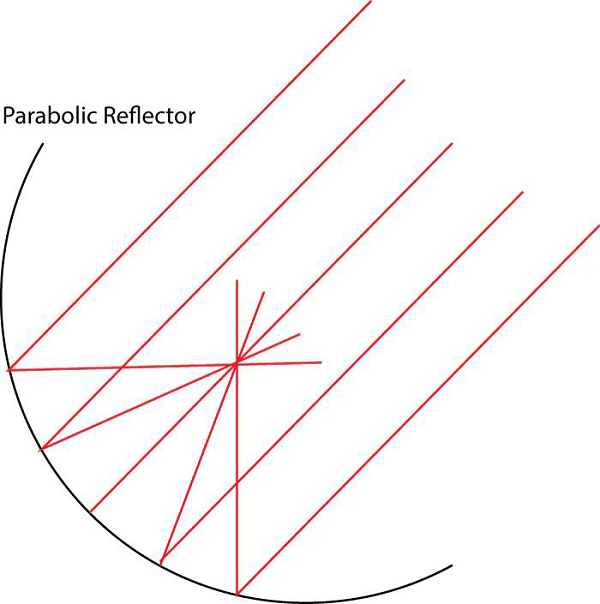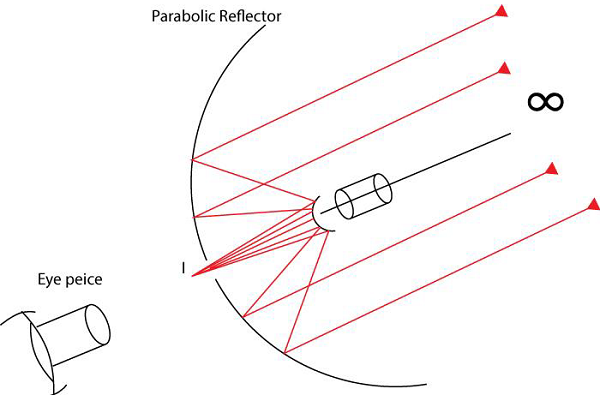Reflecting Type Telescope
Description:
In reflecting type telescope instead of an objective lens, we use a parabolic reflector to collect incoming rays. A parabolic reflector is used because all the rays that are incident parallel to the axis of parabola intersect at a single point on the axis after reflection.
The point of intersection does not vary with the distance of incident ray from the principle axis i.e. the parallel rays which are away from the axis and the parallel rays which are close to axis, all intersect at only one point and very sharp image is formed (this solves the problem of spherical aberration).
Reflecting type telescope works on the principle of reflection not refraction. As there is no refraction, dispersion of white light will not occur (this solves the problem of chromatic aberration).
Reflectors are comparatively very light in weight than the lens. This allows us to create very large size reflectors which is not possible in case of lens (this solves the problem of handling).
To magnify the image generated by the parabolic reflector an eye-piece is also used.

This model of telescope was given by Newton so it is known as Newton’s telescope. But in this telescope, to view an image through eye – piece, the observer needs to go to a height where the eye-piece was located which proved to be inconvenient.
Cassegarian type reflector telescope
In Cassegarian type reflector telescope one more reflector is added to the Newton’s telescope and an opening is created from the parabolic reflector which allows the reflected ray form the small reflector to intersect at a point and form an images.

An eye-piece is placed where the image is formed and this eye-piece magnifies the image and a clear and magnified image of distant object is available.

